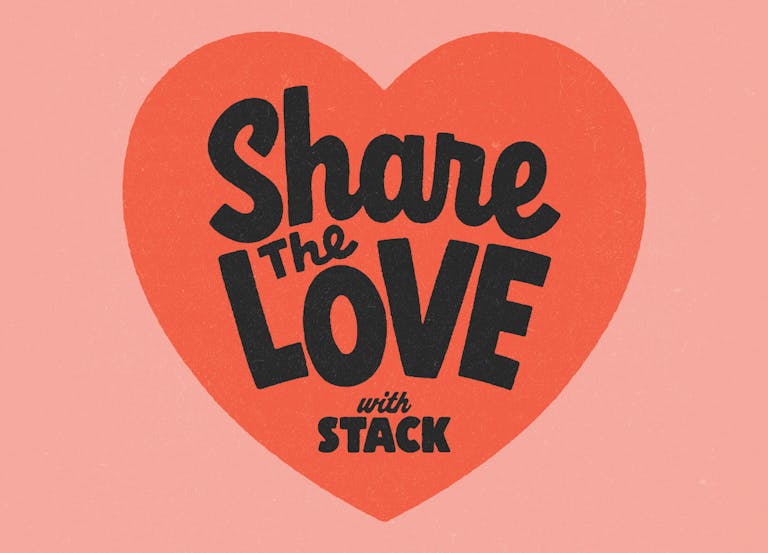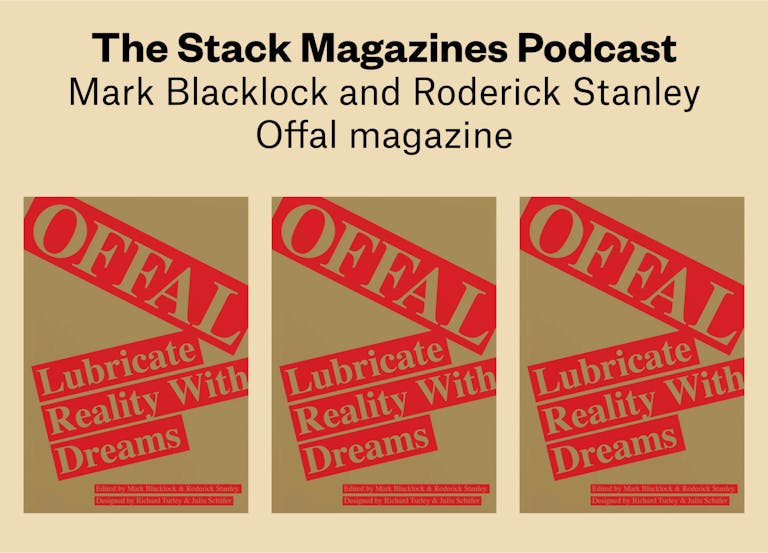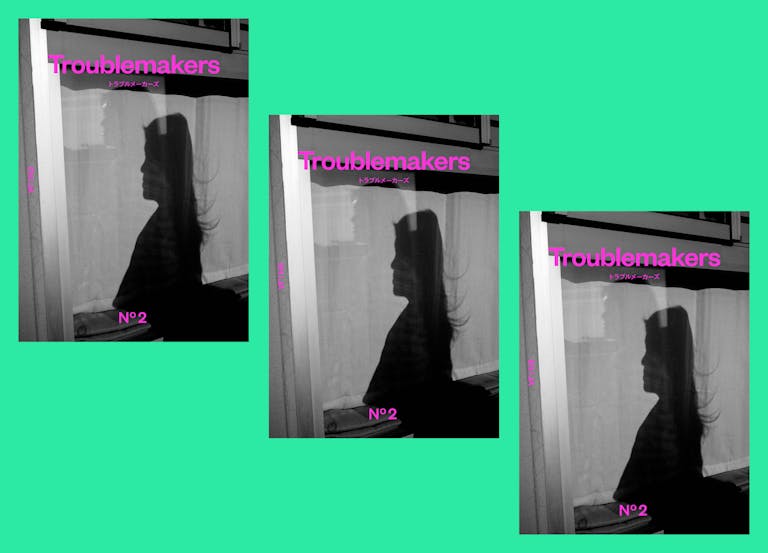Reflecting on The Modern Magazine

It was a great pleasure to help out with Jeremy’s brilliant The Modern Magazine conference yesterday. Marking the publication of his new book, it was a rare opportunity for magazine makers to come together, with plucky independents and big dogs rubbing shoulders under Central Saint Martins’ very smart roof.
One of the main themes to emerge from the day was the power of gut instinct. Whether it was Tyler Brulee advocating “the consultancy of common sense” or Rosa Park from Cereal asserting that she and her partner Richard essentially make a print magazine because they love print and they just want to, there was a strong sense that magazines and their associated activities work best when they’re led by passion.
I made pages and pages of cramped, scrawly notes, so the following is my attempt to summarise the best bits of a really interesting, inspiring day.

Omar Sosa, Apartamento
Omar did nothing to dispel national stereotypes in his tale of Apartamento’s creation. They started without a business plan, he said, meeting every now and then in Barcelona’s bars to talk about the magazine they wanted to make, but putting it off until mañana. When they finally got started they printed 5,000 copies, found a distributor and were sold out within two months.
I’m sure there was a lot more to it than that – I know plenty of people with great magazines who struggle to shift that many copies in double the time – but Omar’s point was clear; a singular vision and quality execution will find readers. Seven years later they’re now up to 48,000 copies per issue, and you can’t argue with that.
There have been plenty of blips along the way – the product pages they introduced to lure more advertisers didn’t work, but even then there were other outcomes. The beautiful still lifes they created to showcase the products became artworks in their own right, which Apartamento continues to experiment with, both in the pages of the magazine and in other settings like shop window displays.
///
Rosa Park, Cereal
In the first of the day’s 10-minute independent publisher slots, Rosa spoke about the sensibilities that inform Cereal. In contrast to Apartamento’s everyday life aesthetic, Cereal aims for a type of minimalism that’s inspired by classic mid-century paperbacks, and lends a timelessness to the magazine. Books also play a part the magazine’s masthead – the lines between the letters in Cereal’s logo are intended to represent books standing on a shelf.
She revealed that they’re now printing 20,000 copies per issue, with plans to double that by this time next year. And there’s a new web-only project in the pipeline too – a dedicated travel site that will exist as a separate brand but under the Cereal umbrella.
///

Tyler Brûlé, Monocle
The force of nature that is Tyler Brûlé took the room by storm. Not only did he wow the audience with his tales of Monocle’s expansion (well, I was impressed) he also brought a hint of the X-Factor to proceedings when he introduced an impromptu competition in which he judged the quality of the questions he was asked at the end of his session and presented copies of Monocle to the best five.
Monocle is a story of contrarian publishing – in 2005, he said, it was clear that the major publishers had lost interest in making magazines that people wanted to keep and advertisers wanted to be associated with. The “creep of the consultants” led to a rush to the bottom, as people began investing financially in businesses they weren’t emotionally invested in.
Tyler’s solution was to go the other way:
// A global magazine with no regional editions
// Broad subject areas
// Subscriptions online only (no annoying subs cards dropping out of magazines)
// Subscriptions sold at a premium rather than a discount, so that Monocle’s international readership could move around the world without having to bother about paying more or less for their magazines
// An online paywall from the start
// A network of bureaux with staff all around the world
// Retail as a major part of the offering (Monocle’s products now account for 20% to 25% of revenues)
// Video and audio provided free online for digital engagement
// Quality not quantity for everything from content to clicks to brand associations
As he described the back of an envelope calculation that led to the decision to build two radio studios rather than launch a tablet edition, the costs being essentially the same but the radio studios delivering a whole new medium and much greater engagement, the vision became almost unbearably seductive.
Back out in the cold light of the cafe for the day’s first tea break, I realised I would have been interested to hear about some of Monocle’s failures or troubles (surely, there must have been some?) But as the radio station reaches its second birthday today with 1.5 million downloads every month and more Monocle stores pop up around the world, you really can only be astounded at the ambition and entrepreneurial flair of Tyler and his team.
///

Simon Esterson, Eye
Back from the break, and Simon took the stage almost apologetically, with the modest admission that compared to what had come before, Eye was really “just chugging along”. But as he described the process that led to him and editor John L Walters buying the magazine and turning it into exactly the product they wanted to make, it was clear that most magazine makers would be delighted to “chug along” with half as much success and singularity of vision.
The theme of gut feeling emerged again in Simon’s talk, as he described the fact that he and John speak about the magazine every day, but not in meetings – these are just conversations. And the magazine itself evolves over its editorial cycle, with pages and specials being added as they’re required. “We got so excited about these typefaces that we decided to have a gatefold,” he said of one particular issue. “You can do that sort of stuff when you’ve got your own magazine.”
///

Justine Picardie, Harper’s Bazaar
For Justine, magazine making began when she was a little girl, making magazines with her sister, which they wrote, drew and stitched together themselves. The thing she loved then, she said, was the conversations she had with her sister, and those conversations have remained throughout her career, morphing into conversations with her current creative director Marissa Bourke, and the conversation she has with her readers, both through the pages of the magazine and via digital channels.
It was interesting to see the way that Justine views herself as walking in the footsteps of the editors who came before her, really just looking after the magazine until it’s handed on to her successor. This had the clang of cliché to it at times, but there was no doubting her sincerity when she noted that magazines do get closed down when they’re not performing financially, and she’d hate for that to happen on her watch.
For her, editing seems to be as much about pragmatic compromise as it is about innovation; the needs of advertisers must be met, as must the needs of her corporate American publishers. But even here gut instinct comes to the fore – describing one of the magazine’s most successful covers, which features a black and white image of Karl Lagerfeld holding a cat, she says that she and Marissa fought for it, because “we loved it – it just made us smile.”
///

Women’s magazines
Justine stayed on stage for the first panel discussion of the day, joined by Penny Martin of The Gentlewoman, Debbi Reynolds from Libertine and Liz Bennett from Oh Comely to debate women’s magazines, chaired by Kati Krause.
All the panelists had their issues with the notion of ‘women’s magazines’, but they approached the argument from very different angles. Penny was the provocateur, noting that women’s publishing has slipped further and further towards shopping pages, and that yes, women love clothes and buying things, but so do men, so why have mainstream women’s magazines gone so far down that road?
Her comments were pointed in the general direction of Justine, who replied in a more conciliatory tone, but also railed against the oversimplification of a genre in which a magazine like Inside Soap can be placed in the same bracket as Harper’s Bazaar.
For her part, Liz noted that the feminist press does a great job of parodying the mainstream, but fails to propose a serious alternative, while Debbi picked up on a point Justine had made about quality writing appearing in Harper’s Bazaar, to ask why this was the exception to the norm in mainstream women’s magazines.
But the most salient point of the session was Penny’s, when she underlined the importance of diversity: “This would be a really poor session if we were trying to come to consensus on what should be in a women’s magazine,” she said. “They should all be different. The real obscenity is to print a bad magazine, and let’s be honest, there are far too many of them.”
///

Davey Spens, Boat
Davey kicked off after lunch, promising to stick to his script so as not to “ramble on and say offensive things”. Speaking about the business decision to publish a magazine, he admitted that it takes half the studio’s time and contributes just 7% of revenue, and that they ask themselves every issue why they bother. But, he said, they make it because it would be impossible not to – it’s a passion project that can sometimes lead to paid work, but essentially they make a print magazine, “because we’ve got something to say and we think this is the best way of saying it.”
///

Patrick Waterhouse, Colors
Incredibly well informed, bubbling over with ideas and interconnections, Patrick spent the bulk of his talk showing examples of his work. That’s normally a formula for a pretty dull half hour, especially if you’re already familiar with the material on show, but Patrick’s insights were utterly fascinating, whipping along as he jumped from issue to issue.
Drawing to a conclusion, he turned to the way he approaches design, declaring that it’s not enough for a story to be interesting – it needs to have a way of looking good too. Working on Colors he has a few different ways of making that happen – he deconstructs things, he shows the processes that surround us, he shows how things work, and he shows ‘how to’ guides. The sheer amount of thought that goes into every issue was obvious, but it never became overbearing, and instead feeds the magazine’s playful, inquisitive visual style.
All the work goes into the printed object, he said, so they do a lot to build things around the issues, for example this incredible contraption, which receives, reinterprets and republishes the news. Photographed for the cover of the Making the News issue, it’s also a self-contained expression of the content itself, what Patrick called the ‘thing-ness’ of what they try to do. Amazing.
///
Cathy Olmedillas, Anorak
Cathy used her 10 minutes on stage to run through the history of Anorak and to announce the launch of Teepee, the new magazine for teens, coming out in the Spring. Teepee will be gender-neutral, pretty much unheard of in the teen magazine market, and Cathy reflected on the fact that she’s reliving the making of Anorak. At the time she was told that a gender-neutral children’s magazine would never work, and she’s hearing exactly the same about teens. Only time will tell if she can pull it off, but in the meantime, the doubters are only making her more determined to succeed.
///
Paul Barnes, Commercial Type
Paul began with an admission that he’s not a magazine maker. He started out working in magazines but said he decided he wasn’t very good at it – he didn’t like dealing with photographers, but he loved creating typefaces for magazines, so that’s where his work took him.
Since co-founding Commercial Type, Paul has created type for everyone from the Guardian to the National Trust to Puma (the numbers on the back of Puma shirts at the last World Cup came courtesy of Paul and his team). But in his talk he focused on his work for Harper’s Bazaar and Wallpaper, giving an incredibly detailed history of the type and where his ideas came from (lots of wandering around graveyards, apparently).
///
David Jacobs, 29th Street Publishing
After a final tea break we began the final part of the day with David Jacobs, one of the co-founders of digital publishers 29th Street. David explained that he and his partner wanted to create a digital publishing tool based on great reading and writing experiences, and noted that the 29th Street model matches the changing arc of the typical publishing career. There was a time when journalists could expect to train, find a job and then be employed for the rest of their lives, but today’s journalists tend to be much more entrepreneurial, and 29th Street helps to facilitate that.
///

Independent magazines panel
Then it was time for the independents to come together. I joined Rosa, Simon, Davey, Cathy and David on stage for a discussion about the future of independent publishing. I’d intended to start out with digital and move things on from there, but the conversation kept coming back to digital. That might be to do with the way I framed it, but I think it’s interesting nonetheless – it’s a subject everyone wants to discuss and there are definitely more developed solutions available today, but coming back to print still feels like returning to dry land after taking a dip in the digital waters.
///

Scott King, How I’d Sink American Vogue
Jeremy had mentioned at the start of the day that he’d programmed the event like a magazine, with an eye to pacing, and his last two speakers were perfectly positioned. Scott King was excellent, recounting his misadventures in publishing with gruff gusto. He recalled his days working at Sleazenation, a magazine he didn’t like very much when he joined, and which he tried to make so controversial that it would be withdrawn from shelves. Instead it won awards.
With Sleazenation behind him and now working as an artist, he began a practice of ‘method design’, in which he created and inhabited the character of Stalky, lead-singer of a Goole-based punk band that had grown up and left their punk ways behind. And finally he moved onto How I’d Sink American Vogue, a project that saw him become editor of American Vogue, which he crashed spectacularly in a haze of martinis and cocaine.
I’ve just read that back and it doesn’t make much sense. Probably best to just Google him instead. He’s brilliant. And he also made an interesting point about subject, medium and context – his feeling is that most designers just think about the subject, but he starts the other way around, thinking about the context that a magazine exists within and working his way back to the subject.
///

Richard Turley, Bloomberg Businessweek
And finally, the big man of magazine design, the day’s headliner, the very funny, very self-deprecating Richard Turley. Richard paid tribute several times to the influence that Scott has had on his work, and in fact insisted throughout that his success was based mainly on ripping off other people’s ideas, while being supported by a large and talented team.
It was interesting to hear him talking about the way American publishing works, with big teams taking a long time to assemble and finesse stories, and it was clear that his is essentially the opposite model, working quickly and spontaneously to respond to the subject matter.
He said he always tries to have an opinion with his designs and tries to put a bit of himself into it, and one way he does that is by working with things he doesn’t like very much. For example he doesn’t like extended type so he’ll try to use it and do something interesting with it, forcing himself to respond to it rather than staying on safer ground.
It was a great end to a really fantastic day, and it has got me very excited about the next Printout (details of which soon). Our evenings in a Shoreditch basement can’t really compete with a big extravaganza like the conference, but it’s proof that there’s a huge amount to talk about in the publishing world, and some very interesting people queuing up to join the debate.
///
Images courtesy of Rhys Atkinson



